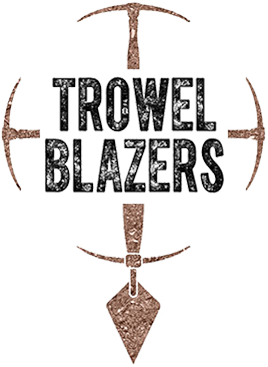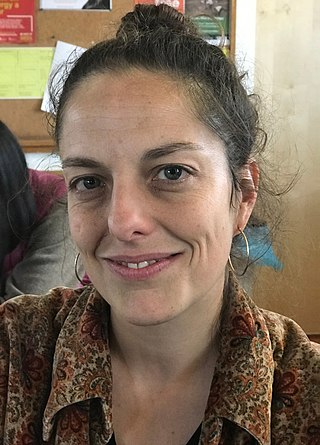Related Research Articles

Dame Kathleen Mary Kenyon, was a British archaeologist of Neolithic culture in the Fertile Crescent. She led excavations of Tell es-Sultan, the site of ancient Jericho, from 1952 to 1958, and has been called one of the most influential archaeologists of the 20th century. She was Principal of St Hugh's College, Oxford, from 1962 to 1973, having undertaken her own studies at Somerville College, Oxford.

Jacquetta Hawkes was an English archaeologist and writer. She was the first woman to study the Archaeology & Anthropology degree course at the University of Cambridge. A specialist in prehistoric archaeology, she excavated Neanderthal remains at the Palaeolithic site of Mount Carmel with Yusra and Dorothy Garrod. She was a representative for the UK at UNESCO, and was curator of the "People of Britain" pavilion at the Festival of Britain.
Agnes Ethel Conway, later Agnes Horsfield, was a British writer, historian and archaeologist who worked in the Middle East from 1929 to 1936. Perhaps best known for her excavations at Petra and Kilwa, she also produced publications on the history of Allington Castle, which had been owned by the Wyatt family in the 16th century.
George Horsfield (1882-1956) was a British architect and archaeologist. He was Chief Inspector of Antiquities in Transjordan in 1928–36. Horsfield began the initial clearance and conservation of Jerash in 1925, and excavated at Petra with his future wife, Agnes Conway in 1929.
The Kenyon Institute, previously known as the British School of Archaeology at Jerusalem (BSAJ), is a British overseas research institute supporting humanities and social science studies in Israel and Palestine. It is part of the Council for British Research in the Levant and is sponsored by the British Academy.
Mary Aylwin Cotton OBE, FSA, Hon FBA, known as Molly Cotton, was a British archaeologist and former doctor, noted for her work in Iron Age Britain - particularly hill forts - and Roman Italy. She trained archaeology students at the British School at Rome.
Grace Mary Crowfoot was a pioneer in the study of archaeological textiles. During a long and active life Molly—as she was always known to friends, family and close colleagues—worked on a wide variety of textiles from North Africa, the Middle East, Europe and the British Isles. Returning to England in the mid-1930s after more than three decades spent in Egypt, Sudan and Palestine, Crowfoot co-authored a 1942 article on the "Tunic of Tutankhamun" and published short reports about textiles from the nearby Anglo-Saxon ship burial at Sutton Hoo (1951-1952) in Suffolk.
Cecily Margaret Guido,, also known as Peggy Piggott, was an English archaeologist, prehistorian, and finds specialist. Her career in British archaeology spanned sixty years, and she is recognised for her field methods, her field-leading research into prehistoric settlements, burial traditions, and artefact studies, as well as her high-quality and rapid publication, contributing more than 50 articles and books to her field between the 1930s and 1990s.

Audrey Shore Henshall was a British archaeologist known for her work on Scottish chambered cairns, prehistoric pottery and early textiles.

Margaret Ursula Jones was an English archaeologist, best known for directing major excavations at Mucking, Essex.
John Winter Crowfoot CBE was a British educational administrator and archaeologist. He worked for 25 years in Egypt and Sudan, serving from 1914 to 1926 as Director of Education in the Sudan, before accepting an invitation to become Director of the British School of Archaeology in Jerusalem.
Alice Stevenson is a British archaeologist and museum curator. She is Senior Lecturer in Museum Studies at UCL's Institute of Archaeology and a specialist in Predynastic and Early Dynastic Egyptian archaeology.
Marie Louise Stig Sørensen is a Danish archaeologist and academic. She is Professor of European Prehistory and Heritage Studies at the University of Cambridge and Professor of Bronze Age Archaeology at the University of Leiden. Her research focuses on Bronze Age Europe, heritage, and archaeological theory.
Jessie Mothersole (1874–1958) was an English archaeologist, artist, and author.
Rachel PopeFSA is an archaeologist specialising in Iron Age Europe. She is Reader in European Prehistory at the University of Liverpool.

TrowelBlazers is a project aimed at increasing the representation of women in the fields of archaeology, geology and palaeontology. The project is run by Brenna Hassett, Victoria Herridge, Suzanne Pilaar Birch and Rebecca Wragg Sykes.

Brenna R. Hassett is an American British bioarchaeologist at University College London (UCL), author, public speaker and one of the founders of TrowelBlazers, which celebrates women archaeologists, paleontologists and geologists.

Maria Millington Lathbury was a classical scholar, archaeologist and numismatist. An alumna of Somerville College, she campaigned for Oxford University to award degrees to women. Along with Ethel Abrahams, she was one of the first female scholars of classical Greek dress. She married the archaeologist John Evans, and their daughter was the art historian Joan Evans.
Sally Ann Worrell is a British archaeologist specialising in Romano-British material culture.

Lady Eliza D'Oyly Traill-Burroughs was a British archaeologist. She described the discovery of Taversöe Tuick chambered cairn on the island of Rousay, Orkney, Scotland in May 1898 in her journal, which was published and discussed in Proceedings of the Society of Antiquaries of Scotland in 1985.
References
- 1 2 3 "Raising Horizons: Unwrapping Archaeology | TrowelBlazers" . Retrieved 7 February 2021.
- ↑ "Interview: Dr. Amara Thornton". MBC. Retrieved 7 February 2021.
- ↑ "Ldmp Recipients - BRISMES". www.brismes.ac.uk. Retrieved 7 February 2021.
- ↑ "The Housewife's Jericho". The British Academy. Retrieved 7 February 2021.
- ↑ "Book Review: Archaeologists in Print: Publishing for the People by Amara Thornton". LSE Review of Books. 6 September 2018. Retrieved 7 February 2021.
- ↑ "Archaeologists in Print: Publishing for the People, by Amara Thornton". Times Higher Education (THE). 6 September 2018. Retrieved 7 February 2021.
- ↑ UCL (22 January 2019). "Filming Antiquity". Institute of Archaeology. Retrieved 7 February 2021.
- ↑ "Petra 1929". Petra 1929. Retrieved 7 February 2021.
- ↑ "An Understudied History". 2020.
- ↑ "Dr Amara Thornton". Society of Antiquaries of London. Retrieved 7 February 2021.
This article needs additional or more specific categories .(August 2021) |